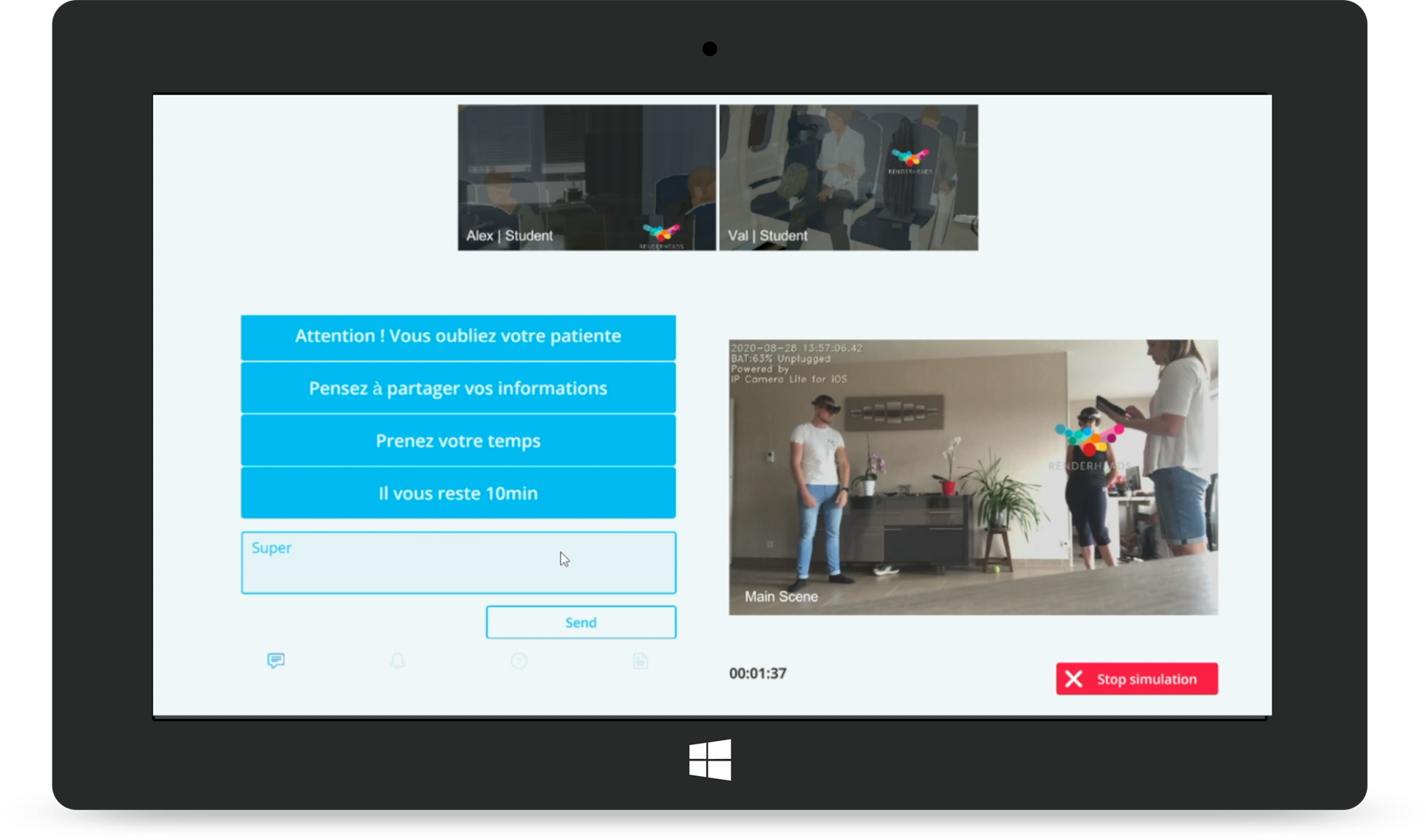HOST - Human and Organizational Skills Training
Engineering and Architecture

In recent years, a team at the HUG (Hôpitaux Universitaires de Genève) has implemented an innovative training method to strengthen the human aspects of medical staff. This method is largely inspired by the concept of “Crew Resource Management” used in civil aviation and is based on 2 pillars, an operational and a relational one. This second aspect works on the analysis of the conditions for success through the composition of teams and their personal characteristics. The operational aspect is enhanced by the presentation of practical tools which can be used to strengthen communication and interdisciplinary collaboration. Finally, the method simulates childbirth in an airplane, with a real setting, real actors, and real puzzles to be solved in a stressful situation.
Despite the good results and the very encouraging feedback about this method, two main limitations have been detected. The first one is the logistical constraints due to setting a training session: The installation of the decor, the selection of actors, and the elaboration of the puzzles represent a significant investment, difficult to reproduce at high frequency. The second limitation is linked to the participants’ immersion level in the training scenario. Indeed, the rudimentary decor and the frequent interventions of the moderators break the immersion and reduce the training efficiency.
The objectives of HOST project is to tackle the limitation detected by moderators during last training sessions. The main limitations can be enumerated as follows:
- Lack of autonomy: The participants don’t discover the situation on their own. They watch a video that explains the context and what they need to do. In a more realistic situation, participants would discover the problem on their own and try to come up with a solution.
- Not realistic enough decor: The current decor consists of tables and chairs, which is not very realistic and doesn’t bring enough immersion.
- Regular interruptions: The moderators often interrupt the game to guide the participants and thus considerably reducing game immersion.
- Moderators can’t enter in direct contact with the actors to direct them without interrupting and giving away their inputs.
- Moderators don’t have a contextualized way to take notes. The debriefing is oral. Participants might have issues remembering or relating to a specific point.
To enhance the participant immersion, the project HOST aims at developing a multi-user augmented reality app allowing to substitute the décor and the actors by virtual ones. With this app, participants will still be able to see each other and communicate directly, but with enhanced view using Hololens headsets. The Hololens allows participants to visualize the plane, the passengers, the patient, and virtual enigmas to be solved. The second aspect of HOST project is to enhance immersion by avoiding the animators’ interruptions and direct interventions. To achieve this goal, we developed a tablet-based monitoring app allowing any monitor to supervise participants by sending them text messages, audio messages, displaying hints and indicators, and activating predefined events within the scenario (passenger moves, captain messages, etc.). Finally, the monitoring app will be able to record important events and comments during the training session and generate PDF files and/or a video listing all these significant moments. PDF and video files can then be used during debriefing sessions or later for personal training.
The HOST project integrates several innovations. The training method is the first: The aerospace-inspired method has been adapted and extended so that it can be used for the training of hospital staff. Based on an “escape room” approach, this method is a gamification of a stressful situation simulation that allows training on important aspects such as communication, organization, prioritization, task distribution and coordination. The second innovation is technological with the transformation of the whole real training environment into its virtual equivalent reinforced by rich communication and supervision functions. Finally, the whole solution has been designed and developed in a generic way to ease the extension of other decors, the integration of new puzzles, and the addition of new supervisory functions.